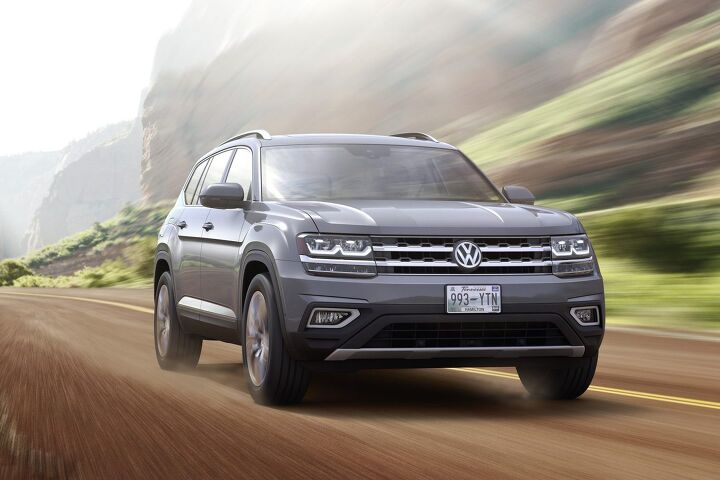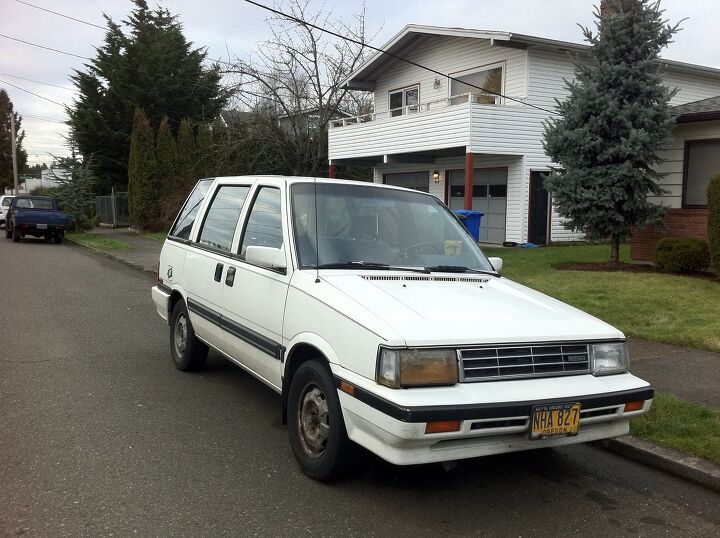#criticism
Volkswagen Design Employee Claims Atlas Styling Boring, Old, Domestic
There’s no doubt Volkswagen needs its new midsize Atlas to be a home run (or, at least, a ground rule double) to keep its American dealers appeased following the now-year-long diesel emissions scandal. Even before the scandal, Volkswagen USA could neither create a product mix befitting American sensibilities nor price its ill-marketed product at price points palatable to the American public.
Yet, Atlas — Volkswagen’s crossover slotting between the compact Tiguan and upmarket Touareg — wears sheetmetal penned by Ativan-popping designers, and one of Volkswagen’s design employees agrees.
Ur-Turn: High-Low and Crossovers to Go
(Welcome Daniel Ho — a.k.a. “Waftable Torque” — who’s here to school you proles on the true appeal of the crossover/cute-ute/abominable mom-van. — JB)
There has seldom been a topic that riles automotive journalists and commentators up as much as crossovers. They inhabit categories that are successfully profitable and growing. Non-existent 20 years ago, they have become increasingly aspirational to a large segment of today’s drivers. There have been many theories as to why they’re successful. Some blame CAFE, others the baby boomers, and others still blame American exceptionalism. They may all be right.
The Truth About Cars has always pointed out things others don’t see. Sometimes it’s the authors who provide the evidence, but sometimes it’s the commentators who supply the observation. I’d like to show you something that, once you see it, you can never un-see.
The crossover is merely the tip of the iceberg.
The Wobble Comes To An End As Consumer Reports Echoes TTACs Criticisms Of The Jeep Cherokee
In late 2013, TTAC was invited to review the Jeep Cherokee. As the journalist assigned to cover the launch, I gave what I felt was a nuanced but critical assessment of the vehicle: that it delivered with respect to its off-road prowess, but left a lot to be desired in other areas, namely the on-road driving experience and overall packaging.
TTAC was alone in its criticisms, with other outlets heaping praise on the Cherokee for attributes that I felt were lacking. A backlash from readers, Mopar fans and other entities ensued, and we were left looking like a fringe element of anti-Cherokee cranks, despite what we as an organization felt was a fair and nuanced, if – ahem – slightly colorful review of the car. It turns out that in the end, we weren’t alone.
Avoidable Contact: Torture, Forgiveness, Meaning.
Earlier this week, I wrote about the General Motors XP-75 Eagle and the idea that GM might have engaged in a relatively small bit of realpolitik during said plane’s conception and gestation. I’ve been writing for TTAC long enough to have a fairly accurate sense of how the B&B as a whole will regard whatever I write, but in the case of this article my guesses about what I’d find in the comments section were completely and thoroughly mistaken. I’d like to address them as part of larger concerns I have about the future of writing and criticism on the Internet, and I will do so in what you’re about to read.
But first, let’s talk about the way the Japanese treated prisoners during World War II, shall we?



















Recent Comments